











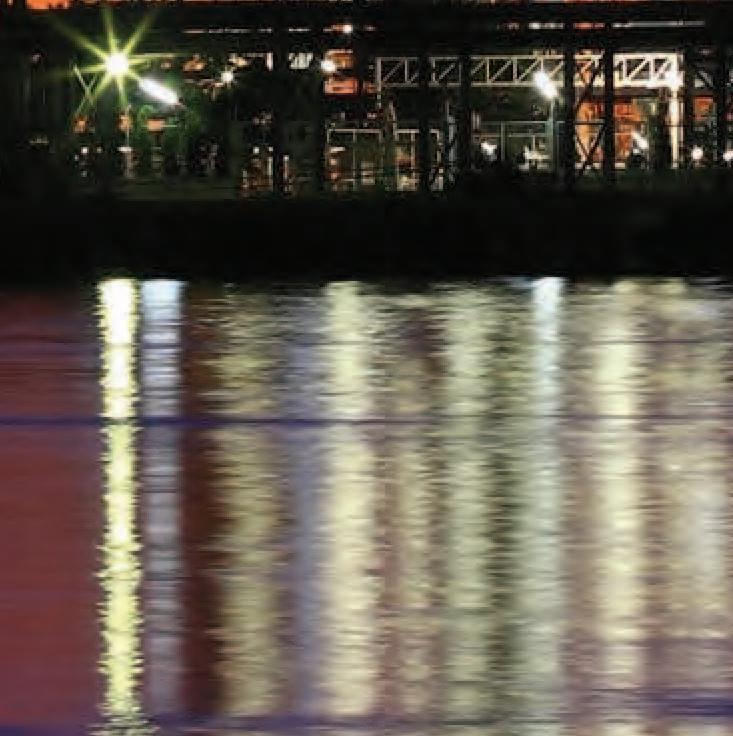





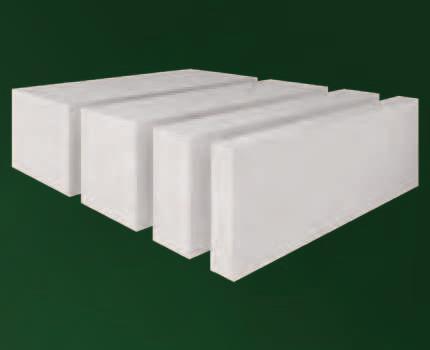
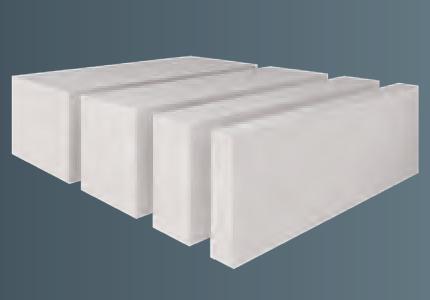





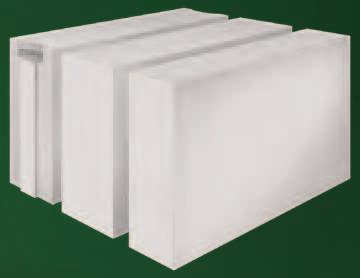
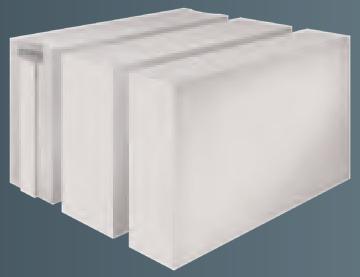



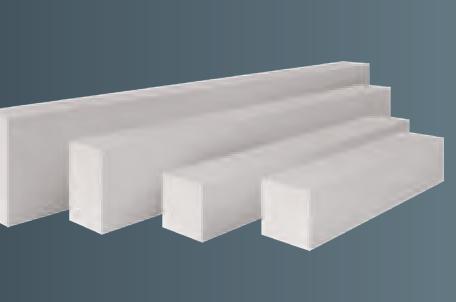
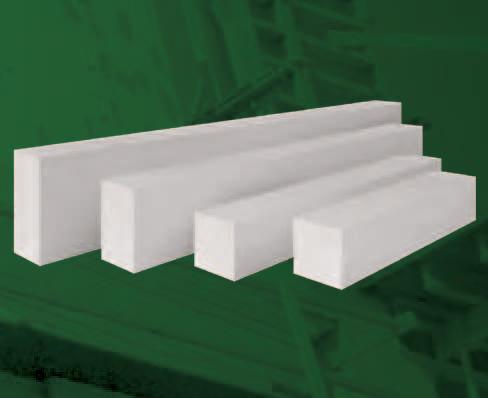
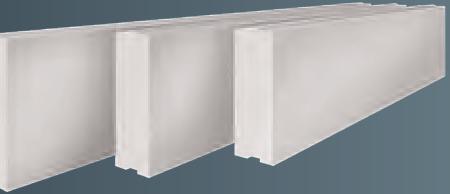

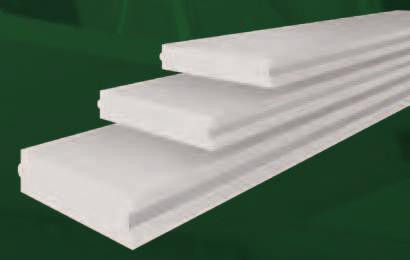
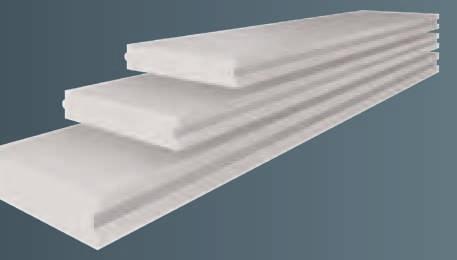


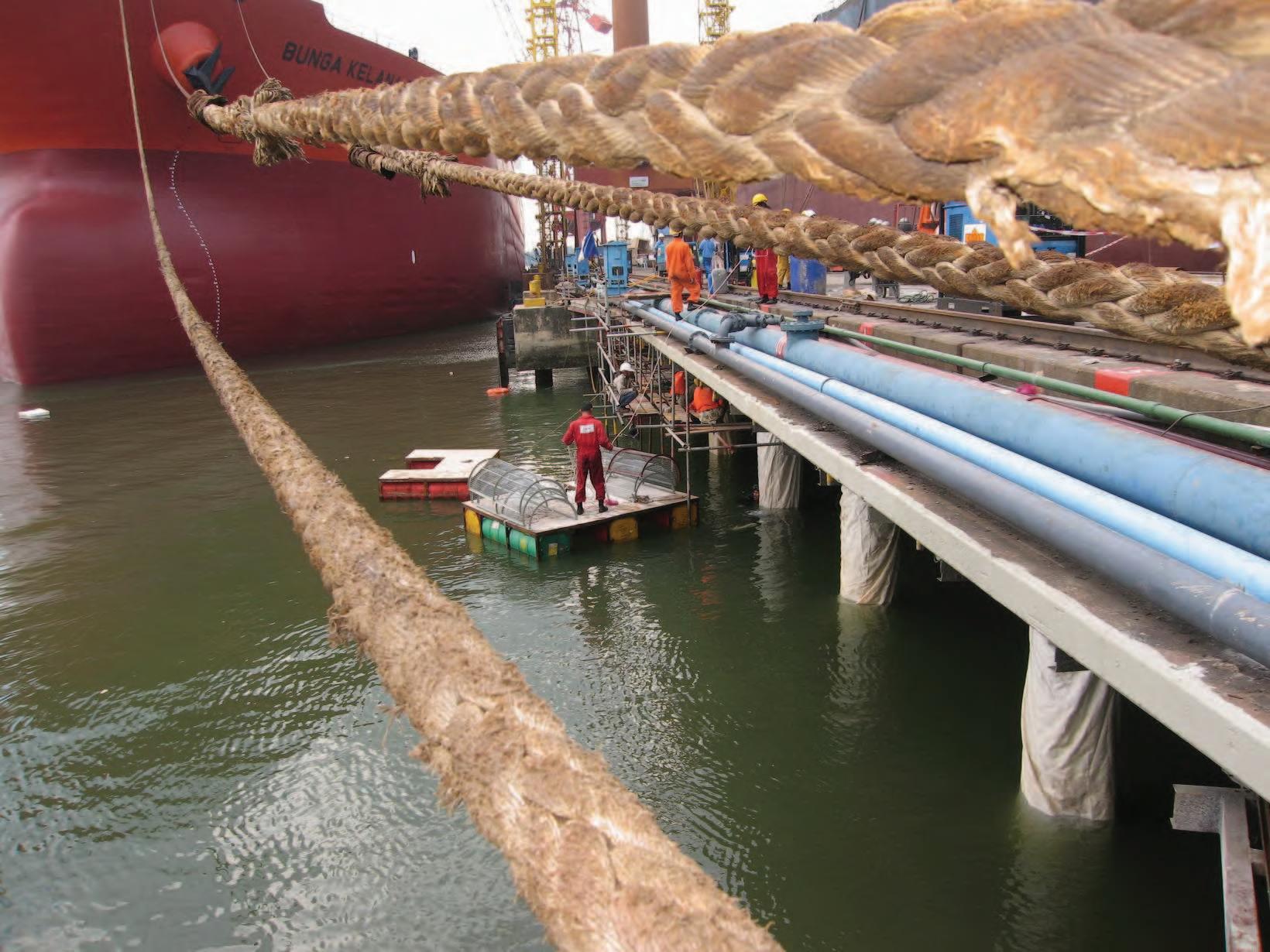
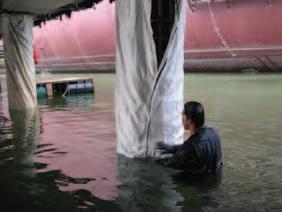
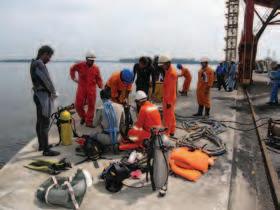
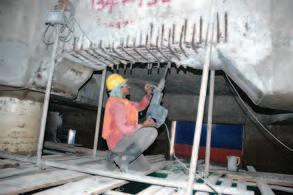



























































YANG DIPERTUA / PRESIDENT:
Ir. Choo Kok Beng, FASc
TIMBALAN YANG DIPERTUA / DEPUTY PRESIDENT:
NAIB YANG DIPERTUA / VICE PRESIDENTS:
Ir. Prof. Dr Ruslan bin Hassan, Ir. P.E. Chong, Ir. Prof. Dr Wan Mahmood bin Wan
Teang Shui, Ir. David Lai Kong Phooi
SETIAUSAHA KEHORMAT / HONORARY SECRETARY:
BENDAHARI KEHORMAT / HONORARY TREASURER:
Ir. Hoo Choon Sean
BEKAS YANG DIPERTUA TERAKHIR / IMMEDIATE PAST PRESIDENT:
Ir. Vincent Chen Kim Kieong
BEKAS YANG DIPERTUA / PAST PRESIDENTS:
Y.Bhg. Dato’ Ir. Pang Leong Hoon, Y.Bhg. Academician Dato’ Ir. (Dr) Hj. Ahmad
Chee Sheng, Y.Bhg. Academician Dato’ Ir. Prof. Dr Chuah Hean Teik
WAKIL AM / CIVIL REPRESENTATIVE:
Ir. Gunasagaran a/l Kristnan
WAKIL MEKANIKAL / MECHANICAL REPRESENTATIVE:
Y.Bhg. Datuk Wira Lt. Gen. Ir. Ismail bin Samion (Rtd)
WAKIL ELEKTIK / ELECTRICAL REPRESENTATIVE:
Ir. Mohd. Aman bin Hj. Idris
WAKIL STRUKTUR / STRUCTURAL REPRESENTATIVE:
Ir. Yam Teong Sian
WAKIL KIMIA / CHEMICAL REPRESENTATIVE:
Ir. Prof. Dr Abdul Aziz bin Abdul Raman
Ir. S. Kumar a/l Subramaniam
WAKIL MULTIMEDIA / MULTIMEDIA REPRESENTATIVE:
Ir. Noor Iziddin Abdullah bin Ghazali
AHLI MAJLIS / COUNCIL MEMBERS:
Ir. Dr Tan Kuang Leong, Ir. June Lau Yuk Ma, Ir. Assoc. Prof. Dr Norlida bt. Buniyamin, Ir. Ishak bin Abdul Rahman, Ir. Lee Cheng Pay, Y.Bhg. Dato. Ir. Samsuddin bin Ismail, Ir. Lee Boon Chong, Ir. Tu Yong Eng, Ir. Lai Sze Ching, Ir. Lee Weng Onn, Ir. Yap Soon Hoe, Ir. Li Thang Fai, Ir. Juares Rizal bin Abd. Hamid, Ir. Norazman bin Mohamad Nor, Ir. Ellias bin Saidin, Ir. Assoc. Prof. Dr Jimmy Mok Vee Hoong, Ir. Dr. Tan Chee
Ramachandaramurthy
PENGERUSI CAWANGAN / BRANCH CHAIRMAN:
1. Pulau Pinang – Ir. Paul Phor Chi Wei
2. Selatan – Ir. David Lee Loke Hai
4. Kedah-Perlis – Ir. Chua Teik Seng
5. Negeri Sembilan – Ir. Hj. Baharuddin bin Ahmad Nasir
6. Kelantan – Ir. Hj. Syed Abdul Rahman bin Syed Abdullah
7. Terengganu – Ir. Mohd. Azmi bin Ali
8. Melaka – Ir. Vellan a/l Vengo @ Perumal
10. Sabah – Ir. Lo Chong Chiun
11. Miri – Ir. Goh Soon Boon
12. Pahang – Ir. Tuan Haji Ahmad Kamal bin Kunji
AHLI JAWATANKUASA INFORMASI DAN PENERBITAN / STANDING COMMITTEE ON INFORMATION AND PUBLICATIONS
Pengerusi/Chairman: Ir. David Lai Kong Phooi
Naib Pengerusi/Vice Chairman: Ir. Yam Teong Sian
Ketua Pengarang/Chief Editor: Ir. Prof. Dr Lee Sze Wei
Pengarang Prinsipal Jurnal/Principal Journal Editor: Pengerusi Perpustakaan/Library Chairman: Ir. C.M.M. Aboobucker
Ketua Pengarang/Chief Editor: Ir. Prof. Dr Lee Sze Wei
Fai, Ir. Hj. Look Keman Sahari, Ir. Yee Thien Seng, Ir. David Lai Kong Phooi, Y.Bhg.
IEM Secretariat: Pamela Jitab
THE INSTITUTION OF ENGINEERS, MALAYSIA Bangunan Ingenieur, Lots 60 & 62, Jalan 52/4, P.O. Box 223, (Jalan Sultan), 46720 Petaling Jaya, Selangor Darul Ehsan. Tel: 603-7968 4001/4002 Fax: 603-7957 7678
COVER NOTE





Bright Future in Chemical Engineering ....................................................................
COVER STORY
Chemical Engineers Are Not Chemists.................................................................... Plenty of Opportunities for Career Development......................................................
PRESIDENT’S CORNER
It’s Show Time, Young Engineers...........................................................................
HISTORY OF IEM
FEATURE ARTICLES
Trends of Biodegradable Polymers ........................................................................
PRESS STATEMENT
Government on Right Track in Targeting 40% Science Students ..........................
ENGINEERING DIGEST
SAFE TEA TIME
FORUMS
Research Paper Competition .............................................................................
GLOBE TREKKING
The Taroko Gorge of Taiwan ..................................................................................
PINK PAGE
Temuduga Profesional............................................................................................
BLUE PAGE
Keahlian.................................................................................................................. Dana Bangunan......................................................................................................
Connecting Young Engineers – Young Engineers Section Oil, Gas & Mining Engineering
Facilities Management
Wishing all members and readers “Happy 50th Malaysia Day”. 16 September 1963 marked the joining together of Malaya, North Borneo, Sarawak and Singapore to form Malaysia.






shirley@dimensionpublishing.com
joseph@dimensionpublishing.com
bee@dimensionpublishing.com
siewli@dimensionpublishing.com
beela@dimensionpublishing.com
masaki@dimensionpublishing.com
yenyin@dimensionpublishing.com
DIMENSION PUBLISHING SDN. BHD. (449732-T)
HOFFSET PRINTING SDN. BHD.
JURUTERA MONTHLY CIRCULATION: 28,000 COPIES
PUBLICATION DISCLAIMER
COPYRIGHT (449732-T)

Mohd Ali Hashim is an unassuming man and so soft-spoken that I wonder if his students ever take advantage of him. But make no mistakes. Five minutes with the Professor of Chemical Engineering at University of Malaya and one realises that there is a steely presence behind his patiently quiet demeanour.
He shows Ir. Professor Dr Dominic Foo (Chemical Engineering Technical Division chairman of IEM) and I
He is smartly dressed with a tie to match, which he admits, at the end of the interview, that he seldom wears, preferring a more casual style.
We wanted to know about how chemical engineering startedinthiscountryapproximately40yearsago.Beingthe most senior chemical engineering professor in this country, Ir. Professor Ali told us about the story. The university’s Department of Chemical Engineering was established in Malaysia in 1983 and Universiti Kebangsaan Malaysia in 1984) with the help of Professor John Kirkaldy, a Scotsman. Before that, an undergraduate course on chemical technology was offered in the Chemistry Department at the Faculty of Science.
At that time, only a selected few were among the intake, less than 10 students a year. “Today, there are about 60 started, my students were picked for jobs by corporations, even before they graduated.”
However, he adds: “It’s not easy to start a chemical engineering department in general, as it involves very expensive lab equipment.” Later, he walks us to the lab to show us the impressive equipment set-up.
Despite this, more and more universities have started offering Chemical Engineering studies as the demand for chemical engineers continues to grow. Ir. Professor Dr Foo stated that there are more than 10 Chemical Engineering departments set up in the past 10 years, bringing more than 20 departments that offer Chemical Engineering courses in Malaysia, with approximately 1,600 graduates each year. However, Ir. Professor Ali agrees with Ir. Professor Dr Foo that while graduates are excellent in the “hard” skills part, many are still lacking in soft skills or the ability to communicate and make presentations. One of his ways to overcome this is to get his students to do reports as

presentations which he feels, will prepare them better for the job in the real world.
Not to be mistaken for chemistry, chemical engineering is primarily concerned with process engineering though today,
According to Wikipedia, a chemical engineer is one who works principally in the chemical industry to convert basic raw materials into a variety of products, deals with the design and operation of plants and equipment to do such work. A chemical engineer applies and uses the principles of chemical engineering in any of its various applications and these include:
1. Design, manufacture and operation of plants and machinery in industrial chemical and related processes (chemical process engineers)
2. Developmentofneworadaptedsubstancesforproducts ranging from foods and beverages to cosmetics to cleaners to pharmaceutical ingredients, among many other products (chemical product engineers) and
3. Development of new technologies such as fuel cells, hydrogen power and nanotechnology, as well
Chemical Engineering such as materials science, polymer engineering, biochemical and biomolecular engineering.
Howeveritseemsthatnotmanyinthiscountryactuallyknow what Chemical Engineers are doing for their professional
on a survey that he conducted a few years back with his
40% of his student population had enrolled for Chemical Engineering because “I like chemistry”!
There has been a tremendous change of approaches to chemical engineering over the last many years. For a very long time, unit operations and the systemization of transport phenomena have been the core of Chemical Engineering education. The 1960s saw the emergence of process systems engineering. In barely a century, chemical engineers have erected the technological infrastructure of much of modern society. Without their contributions,
industriesasdiverseaspetroleumprocessing and pharmaceutical manufacturing would not exist as we know them today. Currently,
technological challenges, and economic driving forces is shaping a new model of what chemical engineering is.Amajor force behind this evolution is the upsurge of new products and materials that are entering the market. Whether from the biotechnology industry, the electronics industry, or the high-performance materials industry, these products are critically dependent on structure and design at the molecular level for their usefulness. Another force shaping the future of chemical engineeringissociety’sincreasingawareness of health risks and environmental impacts from the manufacture, transportation, use, and ultimate disposal of chemicals. These will be important sources of new challenges to chemical engineers.

When trained in the four-year chemical engineering programme, a graduate can work in waste, food, biochemical industries, apart from the conventional chemical industrial sectors, such as oil and gas, petrochemicals, palm oil-based oleochemicals, etc. The chemical engineering programme trains them basically, for numerous industries, says Ir. Professor Ali.
region is developing at an extremely fast rate, creating a huge, insatiable demand for chemical engineers. The oil and gas sector, for instance, he says, is expanding and as
at an equal rate. Ir. Professor Dr Foo added, Malaysia has emerged to be the design hub for the oil and gas industry
gas, safety and environmental consultants) that started their business in Kuala Lumpur, to support their business in the region, and even worldwide (such as the case for ExxonMobil, see the following page). Ir. Professor Dr Foo noted that there are many new companies sprouting up that are looking for chemical engineers. Those with 4-5 years experience are being snapped up by companies to support their projects in the Middle-East, he says. This explains why more universities are offering chemical engineering
this profession. He also believes that the growing trend will continue at least for another 5-10 years.
“Then there is the palm oil-based oleochemical industry which is growing with new products and by-products being created all the time.”
Ir. Professor Dr Foo chips in: “And do you know the semi-conductor industry also has a need for chemical engineers?”
Seeing the look of surprise on my face, he happily explains: “Yes, think of solvents, waste materials etc. Some 20% to 30% of my students are working in the semiconductorindustry.Chemicalengineershavetheadvantage over chemists when employed as quality controllers as they are trained in the operation process. They also help to deal with the waste treatment in the semi-conductor industry.”
Ir. Professor Dr Ali adds: “There is also environmental engineering, previously (the domain of) civil engineers. But today, people realise that chemical engineers have more
ensuring the treatment process to perform as it should be, is the job of a chemical engineer.”
In the last 20-40 years, greater awareness of environmental issues and safety has created the need for chemical engineers to ensure safety in the production process and to promote sustainable development. Ir. Professor Ali says HSE (Health, Safety, Environment) is getting more emphasis in the curriculum of any Chemical Engineering programme offerred.
According to IChemE (Institution of Chemical Engineers UK), sustainability is the foremost key issue regarding the chemical engineering profession. The three principal areas of focus are sustainable energy, sustainable technology and the 3R (Reduce, Reuse, and Recycle) concept. The world’s resources are also becoming depleted. We observe that chemical engineers are the key driver in this aspect. We see
of raw materials consumption, energy recovery and other aspect of waste minimisation initiative. Ir. Professor Dr Foo says: “A good example can be found in national oil and gas giant Petronas which is now taking serious measure
for water minimisation in various processing sites in the country. What’s most encouraging is that they are using pinch technology which we developed locally!”
He added: “Within IEM, we are trying to foster this concept via education. In our recently completed Chemical Engineering Design Competition, we set a scope for zero emission for the students to come out with various schemes for implementing waste reduction for their design project. Besides, we also conduct workshops and seminars regularly to promote resource conservation concept.”
Presently, over 80% of the world’s energy comes from fossil fuels which emit high levels of GHG (greenhouse gas). Along with depleting reserves, atmospheric pollution from GHGs is a major issue. However, reduction of fossil fuel consumptionmaynotbeasensiblesolutionforadeveloping country like Malaysia. Instead, chemical engineers should look into the development and application of renewable energy sources.
“In Malaysia, we are blessed with plenty of palmbased biomass, such as empty fruit bunches. You can see the country in order to maximise the potential of this great energy sources.” said Ir. Professor Dr Foo.
I then asked about the issue of professional development, as I was told that chemical engineers were not keen to register with the Board of Engineers Malaysia or sign for membership with professional bodies such as IEM and
Malaysia Branch, says it’s useful for new graduates to join bodies such as IChemE and IEM, especially those who want to work overseas. “This is important for all engineers, not just chemical engineers, as a signature acquires greater value with board membership.”
Ir. Professor Dr Foo added that, with the signing of the MOU (memorandum of agreement) between IEM and IChemE, “we should soon see some joint efforts in promoting professional development among chemical engineering community in the country”.


Manager of ExxonMobil Business Support Centre Malaysia Sdn Bhd, said demand growth in the chemical industry is anticipated to strengthen over time, linked to the growth of the broader economy.
“Most chemical demand growth is in Asia, driven by manufacturing of consumer products for both worldwide export and to serve the growing Asian middle class. These consumers are expected to purchase more packaged goods, appliances, cars, tyres and clothing, many of which are manufactured from chemical products,” he said. “Asia
demand growth since 2000, and this trend is expected to continue,” said the Canadian who has just arrived in Malaysia approximately half a year back.
In the next decade, global chemical demand is expected to grow by 50%, driven by improving prosperity in developing countries. Large scale investments are ongoing in the region, particularly in Singapore and China
chemical businesses. Thurtell feels this augurs well for the chemical engineering profession as the industry boom will require more engineers with strong professional capabilities in every aspect of the business.
Will the development of the oil & gas sectors in Malaysia
profession? In Malaysia, ExxonMobil has been operating for over a century. In fact this year marks the company’s
Thurtell said: “We are a major oil producer and natural gas supplier in Peninsular Malaysia. We produce about a
about half of its natural gas needs which is mainly used for power generation. Beyond upstream operations, our Business Support Centre, which is the second largest within ExxonMobil, also hosts ExxonMobil’s IT infrastructure and provides IT support across the globe 24/7.”
As an engineering-based company, ExxonMobil hires a lot of engineers to meet the operating needs of its business. “We also employ engineers in our EGSO in Kuala Lumpur.
By virtue of the EGSO functionally reporting to ExxonMobil Research and Engineering (EMRE), our engineers are given the opportunity to provide technical, engineering and application support for ExxonMobil’s manufacturing plants around the world,” he explained, adding that about tremendous local talent we have in our organisation”.
Sadly, many chemical engineers are not registered with the Board of Engineers Malaysia. We asked Thurtell what ExxonMobil is doing to help develop young graduate engineers into professional engineers. He said: “We recognise that engineers play many different roles,
and process requirements. At ExxonMobil, membership in professionalboardsisnotaprerequisitetoemploymentoran on-the-job requirement as much of our focus is on safe and reliable project management and implementation, as well as operationsofourexistingfacilities.Nevertheless,wearefully
to improve or maintain their skills and have over the years provided education assistance and reimbursement of the full cost of studies upon successful completion. We also provide internal training programme to strengthen the technical skills of our engineers.”
Chemical engineers can help to promote sustainable development in the country. Thurtell said ExxonMobil’s commitment to operating in an environmentally responsible manner is anchored in its Environment Policy, which fosters appropriate operating practices and training, and requires its facilities to be designed, operated and managed with the goal of preventing environmental incidents.
He added: “Our ‘Protect Tomorrow. Today.’ initiative guides our management processes to continuously improve environmental performance. Our business operations continue to drive enhancements in environmental performance by incorporating Environmental Business Planning into the annual business planning cycle. In Malaysia,oneexamplewhereenvironmentalconsiderations are incorporated into the design basis of our facilities is the use of a hybrid power-generation system on our unmanned satellite platforms. Solar panels produce about half the electricity required, and thermoelectric generators provide the other half. This combination ensures high reliability and low operating costs. Within the global ExxonMobil group, we also focus on various renewable energy initiatives, apart from doing energy optimisation such as co-generation, etc.”
Thurtell shared with us more about ExxonMobil’s new
industry as a whole.
Thurtell: As a whole, Malaysia is a very attractive place to do business because the country has a stable economic
English, and good infrastructure and connectivity. One of the strongest selling points for us is the exceptional talent pool that is available locally for technical skills and which we can grow and develop into world-class engineers. The government agencies that we worked with were also very supportive of bringing in foreign investment.
The goal of the Engineering Global Support Organisation
globe to provide high quality engineering to our manufacturing operations around the world. “However, the interesting part is that, EGSO actually has no projects in Malaysia, since we have no downstream operations in this country. So it only does work for the rest of the world!” Since its opening in July 2011, EGSO has grown quickly and currently has over 50 engineers, predominantly chemical engineers and some mechanical engineers, performing a wide range of technically advanced
to create an environment where we enable talented engineers to do great work for our internal customers. The population here that is culturally diverse also helps our newly employed engineers to adapt to different working cultures very easily. “Personally I like this place too, including its weather! Of course I miss the cold... but people here are friendly, helpful and easy to engage with. So I like this place!”
Thurtell: Like many companies, in addition to excellent academic performance, we look for candidates with leadership and communication skills, analytical capability, honesty and integrity. Other qualities include drive, initiative, perseverance and adaptability.
For the EGSO, we hire engineers to provide technical, around the world. Our new employees start as engineers performingawiderangeofwork,rangingfromequipmentdesign to optimisation and controls to development of applications. We (breadth and depth) with initial job assignments before broadening into other technical areas.
Some will move on to more senior positions at ExxonMobil’s
U.S. or Europe with varied opportunities in engineering, plant manufacturing and even management positions.
Thurtell: At ExxonMobil, we have a long-term oriented approach to career development, in which we emphasise continuous learning and professional development. We believe this long-term career-oriented approach provides us with a competitive edge by meeting both business and employee needs.
Generally, engineers in ExxonMobil are developed for a technical or management career path, depending on their interest and capability. Some choose to become senior technical professionals by developing depth and breadth of skills within a given area. They are recognised for their achievements and are also designated subject matter
invaluable resource for their customers and peers around the world. Others follow the supervisory or management career path where challenging assignments and projects, with both a local and global scope help build their business judgment, leadership and personal effectiveness skills.
term. This discipline is applied across our entire portfolio
divestment of assets that no longer meet our long-term globally integrated business model which spans upstream, downstream and chemical, which enables us to maximise the value of every molecule that we produce, leverage the advantages of our organisational structure, and optimise colocated manufacturing.

It’s not a one-way street, however – some people switch back and forth between these options as they develop their careers. Personally, my career path has moved between technical leadership and management leadership roles multiple times, all within ExxonMobil.
In short, many different career paths are possible, depending on opportunities that arise versus one’s interest and capabilities.
Thurtell: Investment decisions in the energy industry are characterised by time horizons measured in decades. At ExxonMobil, we test projects over a wide range of scenarios to
thoroughly evaluated, and effectively managed.
Our disciplined approach to investing focuses on the
for project assessment with proven project development expertise, we gain advantage in our investments over the long
Thurtell: At ExxonMobil, we believe in hiring people for long term careers. We don’t think it’s desirable to achieve short term gains by switching companies at the expense of long term career progressions. Senior leadership positions in ExxonMobil, both technical and management, are typically whichisobtainedthroughlongtermcareerswiththecompany.
Switching companies limits the ability to progress to the positions from which the senior leadership is formed. Because ExxonMobil is an integrated oil and gas group of companies with global operations in the upstream, downstream and chemical businesses, employees are able to pursue a wide range of job opportunities across the businesses and in various locations. They are also able to take advantage of numerous resources and support, such as workplace
employment to accomodate pressing, family-related needs for a temporary period of time

“The error of youth is to believe that intelligence is a substitute for experience, while the error of age is to believe experience is a substitute for intelligence.”
– Ernest Hemingway
THE error of IEM is to ignore this piece of wisdom from Ernest Hemingway.
Before the older engineers begin to think that they are “over the hill” and before the young think that they are “inexperienced”, let me explain.
For as long as I can remember, young engineers in IEM (including the now seasoned, professional engineers who were young once!) have always displayed exceptional leadership qualities with passion and exuberance that are contagious and unmistakable. They have proven to be the crème de la crème among other young engineers within the Young Engineers ASEAN Federation of Engineering Organisations (YEAFEO).
have done so well that they are now in a class of their own.
Engineers Section has spearheaded speak for themselves –IEM YES National Summit, YEAFEO, Mt. Kinabalu Malaysian Book of Records attempt and others.
Sadly, all these could come to an end.
Why? Because YES is open only to members who have not passed their professional interview or professional


assessment examination. Once they pass, they will become Corporate Members of IEM. At a little over the age of 30 or even younger, many will feel too overwhelmed and intimidated by more seasoned Corporate Members to stand for positions to serve the IEM.
members who are now Corporate Members will no longer to be active and it is a matter of time that we may lose their once invaluable contributions.
brightest and largest group of engineers who can serve IEM and be its future leaders.
Perhaps age should be the qualifying mark for YES membership instead of grade. Those below the age of 40 should be allowed to remain in YES regardless of their corporate status. By the time they reach the age of 40, they
other Corporate Members in the mainstream activities of IEM.
Less than 10% out of the 66 IEM Council members are below the age of 40. This is a very alarming situation and does not represent a healthy demography considering that a huge percentage of IEM engineers are below age 40.
old needs the energy of the young, and the young needs the wisdom of the old.




IN the initial formative stage in 1958, IEM had no building of its own and the Hon. Secretary, Mr. Lau Foo San had
High Street, Kuala Lumpur. The building was later renamed Malayan Bank Building
YAM Raja Tan Sri Ir. Zainal bin Raja Sulaiman, who was also the General Manager of the National Electricity Board (NEB) at the time, IEM was offered temporary use of a demolished and a new multi-storey TNB building stands on the same site.
From our IEM Bulletin (Vol. 1970/1971 No. 7 – February for IEM. An extract from the bulletin is reproduced below:


At its 6th meeting held on 6 November 1959, the IEM Council decided to employ a part-time shorthand typist to help the Hon. Secretary with the correspondence. It was agreed that the person be paid an allowance of “not more than $5 per hour”. As there were no takers, Mr. A.S. Bhatt, a Council Member, was kind enough to provide the required
to handle the day-to-day affairs of the Hon. Secretary and served till 1 September 1970. Before this, IEM had appointed Mr. Shan Thurai as clerk-cum-typist from 1 August
IEM staff members were recruited from time to time as required.
Timor (picture right) served as the Secretariat until Bangunan
May 1976.



The new ABB industrial drives simplify your world because they are all-compatible. The ACS880 drives are designed to tackle any motor-driven application, in any industry, whatever the power range. The drives can be flexibly connected to different automation networks, and through the use of direct torque control, they precisely control different motors such as AC induction and permanent magnet motors. Yet, despite the drives’ wide-ranging capability, they are remarkably easy to use and integrate. To learn about our new industrial drives and the benefits they can offer to you, visit www.abb.com/drives Simplifying your world without limiting your possibilities.



POLYMERS are commonly known as plastics. Polymeric materials are very important for mankind. This is because polymeric materials are lightweight, durable and cheap to produce compared to metal, wood or ceramic. Many people assume that polymers are the materials for modern applications. In fact, humans have been using polymers
natural plant gum to stick together pieces of wood to build houses. This gum, known as dammar gum, is obtained from the Dipterocapaceae family of trees in India and East Asia, which is a source of natural polymer.
Baekeland in 1907, a thermosetting-phenol-formaldehyde resincalledBakelite.Injustacentury,therapiddevelopment of polymer technologies has brought lots of convenience to mankind with the highly effective catalytic polymerization process. When commodity polymers such as polyethylene, polypropylene, polystyrene and polyvinyl chloride became available cheaply, people started to exploit polymers for the productionofdisposablepackagingproducts.Unfortunately, this has resulted in polymer pollution becoming a serious issue globally as petroleum-derived commodity synthetic polymers required hundreds of years to fully degrade into harmless compounds. For instance, a phone top-up card takes over 100 years to degrade naturally while an apple
Biodegradable Polyester
core will be naturally transformed into organic fertiliser in just 3 months.
Basically, most biodegradable polymers are produced by a family of polyester as shown in Figure 1. Biodegradable polymer can be divided into two categories, i.e. petroleumand microorganism-derived types. The former type such as uses ethylene to produce vinyl acetate for polymerisation of polymer is very sensitive to the volatility of crude oil prices and is not environment friendly as the production involves substantial emission of greenhouse gases.
On the other hand, microorganism-derived biodegradable polymers utilise the bio-activity of bacteria to convert plant products such as starch, into the starting chemical for polymerization. Polylactic acid (also known
found to be viable for mass production and is produced with the activity of microorganisms to yield lactic acid
for making textile, packaging, casing, etc. (refers Table
fermentation. These polymers consume renewable feedstock and the productions create carbon credit.
AAC – Aliphatic-Aromatic Copolyesters
PBAT – Poly(Butylene Adipate/ T
PET – Poly(Ethylene T
PBS – Poly(Butylene S
PBSA – Poly(Butylene Succinate/A
PCL – PolyCaproLactone
PLA – Poly(Lactic A
PHB – Poly(Hydroxy B
PHH – Poly(Hydroxy H
PHV – Poly(Hydroxy V
PTMAT – Poly(TetraMethylene Adipate/T
In addition, there are also polymer products in the market called oxo-biodegradable plastic. This so-called “biodegradable” plastic has caused controversy among environmentalists as it is actually degraded using a controlled catalyst to kick-start a chain-scissioning reaction to attack the polymer macromolecules.This catalyst is made of series of active organo transition metals. When the oxobiodegradable polymers are exposed to the ultra-violet and free oxygen attacks, the chain-scissioning reaction occurs
dioxide (CO2 are mostly added to polyethylene and polypropylene. This effectiveness. Nevertheless, controversy also arises about
CompanyArea ofApplicationMarket Products
Fibers Spun-bond fabricsMedical applications, shopping bags, and landscape textiles

Dyne-A-PakFoam meat traysDyne-A-Pak NatureTM tray

Bodin Foam tray cheese CDS srlFood service wareCutlery




thistypeof“eco-friendly”plasticbecauseitisstillderivedfrom petroleum-based product and its degradation still generates CO2 which is against the principle of carbon credit products. In short term consideration, it can help to reduce the burden
can also cause other serious environmental problems, the most serious of which is that it also takes time to be fully degraded into CO2. During the early breakdown process, fragmentation of the plastics will pollute the soil and can be accidentally consumed by the soil habitant organisms.
Various types of eco-packaging are available in the market and such eco-plastics products need to undergo a seriesoftesttoverifyitsbiodegradabilityandcompostability. In the European Union, the compostable packaging must have respective standards to be achieved before they are allowed to use the compostable logo on their products
Standard of Reference Logo
Australia Bioplastics Association
www.bioplastics. org.au Association for Organics Recycling
www.organicsrecycling.org.uk Polish Packaging Research and Development
www.cobro.org.pl/en DIN Certco
http://www.dincertco. de/en/ Keurmerkinstituut
www.keurmerk.nl
www.okcompost.be
Biodegradable Products Institute
www.bpiworld.org Japan BioPlastics www.jbpaweb.net Green Plastic System




2 – 4 October 2013
IMPACT Exhibition & Convention Centre
Bangkok, Thailand
www.powergenasia.com
www.renewableenergyworld-asia.com































POWER-GEN Asia, co-located with Renewable Energy World Asia, is the region’s leading exhibition and conference dedicated to the power generation, renewable energy and transmission and distribution industries.
POWER-GEN Asia, co-located with Renewable World Asia, is the exhibition and nf dedicated tthtiblnd tmiiod distributi indtrie
Attracting 7,000 delegates and attendees from over 60 countries from South East Asia and around the world, nowhere else gives you the opportunity to reach and meet senior executives and industry professionals in one place at the same time, providing key networking and business opportunities.
The POWER-GEN Asia conference has become the major annual platform for the industry to discuss the topics and issues of today and is regularly contributed to with keynote speeches from Government Ministers and Governors of the region’s utility companies.
JOINT OPENING KEYNOTE SESSION – WEDNESDAY 2 OCTOBER 2013 – 9AM
Dr. Twarath Sutabutr, Deputy Director-General, Department of Alternative Energy Development and Ef ciency, Thailand
Governor of Electricity Generating Authority of Thailand, Thailand
Dr. Piyasvasti Amranand, Chairman, Energy for Environment Foundation, Thailand
Mr. Markus Lorenzini, Head of Energy Sector, ASEAN Paci c Cluster, Siemens, Indonesia
TOPICS DISCUSSED AT THE CONFERENCE INCLUDE:
LEADING INDUSTRY EXHIBITION
Discover new ideas, technologies and developments at the region’s foremost exhibition for the conventional power and renewable energy generation industries from leading companies and suppliers from around the world.
EXHIBITION OPENING HOURS: Wednesday 2 October 2013: 10:30 – 18:00 Thursday 3 October 2013: 10:00 – 18:00 Friday 4 October 2013: 10:00 – 16:00
EARLY BIRD DISCOUNT – SAVE OVER 10% – REGISTER TODAY








Register yourself and your colleagues by 6 September 2013 as conference delegates and bene t from the Early Bird Discount Rate, plus free entry to the exhibition. There is no better place to meet the key decision makers in the power generation industry.
OWNEDANDPRODUCEDBY:





























PolymerChemical CompositionProducerApplicationsBiodegrability
Polycaprolactone

DURECT Corporation® Daicel Chemical
Industry-Celgreen® Union Carbide
Corporation-TONE® Solvay Group-CAPA®
Purac-Purasorb® PC 12
Polyglycolide or Purac-Purasorb® PG 20

PolyhydroxyalkanoatePolyhydroxybutyrate
Polyhydroxylvalerate



Cellulose acetate

biodegradable polymers are only produced on a small scale, either for exploration of commercial potential or mainly for biological applications (refer to Tables 3 and mediumforsutures,pinsanddrugcarrierimplants.Normally in vivo
biodegradable contraceptive indicates that Capronor®
Kureha Corporation
Ethicon-Monocryl®Suture
Capronor®Contraceptive implant
Agrotec-Agrothane® -
Paint and metal > 12 months
Dolphin-Petcryl®-Sutures
Bondek®-Sutures
DexonTM S-Sutures
DemeTech®-Sutures > 3 months
Metabolix/ADM-Telles
MirelTM
Ningbo Tianan Biologic
Material-EnmatTM
Copersucar-Biocycle® Biomer-Biomer®
Compost Bags
Consumer packaging
Rubbermaid® Calphalon®, Paper
Mate®
BioTufTM
EcoGenTM 3 -12 months
Ethticon
Samyang
Celanese
Rhodia
DemeTech® sutures
Duracryl® sutures
D-Tek® sutures
Surgeasy® sutures
Ethicon® PDS* II sutures
OrthoSorb® pin < 7 months
Textile
Spectacle frames
Film media
Wound dressingADAPTICTM
Bioceta® Toothbrush
Depend on acetate content
using biological fermentation of dextrose. Metabolix and name of MirelTM benaturallydegraded.Internationalstationarymanufacturer ® product range. or even storage under humid environment but when buried ® pen decomposes in about a year.
Orthopedic surgery, oral and maxillofacial surgery

Suture
Drug delivery
Oral, and maxillofacial surgery
General surgery
Suture, periodontal surgery, general surgery

Orthopaedic surgery
Oral and maxillofacial surgery

TM MX, FixsorbTM
® interference screw, Bio-Corkscrew® suture anchor
® SmartNail® SmartTack® SmartPin® BioScrew®
® Biozip® interference screw, anchor
bone cement plug ® injectable facial restoration
sutures
Interference Screw, Staple 85/15
TM ®, screw, plates, mesh, surgical clip, pins, anchor
Phusiline® Interference Screw, Sage
70/30 ® Surgical dressing Nerve Regeneration

Cellullose acetate is commonly used as cigarette early 20th Century, cellulose acetate is a very important application of cellulose acetate has changed and today, moulded to produce biodegradable plastic articles. Some cellulose acetate. This material comes in a wide variety of colours and textures. They can be adjusted easily, but tend to get brittle with time.
Knitted cellulose acetate fabric treated with specially formulated petrolatum emulsion helps to protect open wounds and prevents the dressing from adhering to the 3
the cellulose. The degradation process causes the release of acetic acid, which is known as “vinegar syndrome”. This and humid conditions, the release of saturation acetic acid emits a smell. This will also further attack the polymer chain and deteriorate the cellulose. A study of cellulose acetate,
reported by Buchanan et al.
acetate can be biodegraded in waste-water treatment assay approximately 70% at 27 days of cellulose diacetate with the rate of degradation also depending on the degree of substitution of acetate. A high degree of substitution of acetate requires longer exposure.
Besides that, most of the mentioned biodegradable
is due to ester containing covalent bond with reactive polar nature. It can be broken down easily by hydrolysis reaction. The biodegradable polyester can be divided into aliphatic and aromatic group with some of the members
polyester produced from non-renewable feedstock. Most of
whereas PBS/PBSA, as marketed by Showa Denko under the tradename Bionolle, is supplied to local Japanese government programmes for packing domestic solid waste before collection.
Generally, all aromatic polyesters are produced from petroleum. Some people think that petroleum-based biodegradable polymers are more feasible than bio-based biodegradable polymers. The reason is that bio-based polymers has raised the issue of competition between food supply and plastic production, especially as there is still a shortage of food among many Third World countries.
bio-based polymers because a small step in developing renewable technology today can lead to a giant leap in reducing our dependence on fossil resources.
Besides, BASF has introduced an AAC product ®. This material is widely used to produce
® has expanded to 60,000 MT to capture the demand of biodegradable plastics which is growing at a rate of 20% per year. BASF
Ecovio®
without the incorporation of additives. Furthermore, Ecovio® has extraordinary puncture-and-tear-resistant as well as weldabilitycharacteristics.Anothercompany,Eastman,also producedAAC with the tradename of Eastar Bio® which has ® contains long-chain branching. A study reported by BASF shows that AAC of ® has comparable biodegradability as cellulose biomass which is able to achieve 90% compostable in biodegradable polymer can also be as good as natural material in term of degradability.
Dupont has commercialized Biomax® PTT 1100 with the plastic melting point of 195oC which makes it suitable for use as fast-food disposable packaging and cups for hot food and drinks.
In conclusion, the research and development of biopolymers have been carried out for many years. Nevertheless, many people lack knowledge about the applicationsofbiopolymers.ButwithNGOsandgovernment agencies promoting the use of biopolymer as environmentfriendly materials for a sustainable future, it is expected that the use of biopolymers will grow tremendously in the near future
with co-monomer ether, amide or aliphatic monomer will







Reconstructing a major intersection to decrease traffic congestion, improve access, and enhance safety takes more than a civil engineering design package. Just ask Creighton Manning Engineering, LLP. This 2012 Be Inspired Award-winning firm selected Bentley’s innovative information modeling software to design this entire project in 3D. It created information models for intelligent, better-performing transportation infrastructure that reduced production time and lowered project costs by providing accurate data for automated grading during construction.
There are some places ONLY Bentley can take you! For more than 25 years, transportation professionals have depended on Bentley to design and build the world’s most innovative projects. You can too.



HOW many of us know what Chemical Engineering is all
meant for chemical engineers. In general, the choice of


CHEMICAL ENGINEERING



EverGUM by MENNEKES® . Receptacle combinations in
solid rubber enclosures.
„Flexible safety - portable distribution boards, receptacle strips and wall-mounted distribution boards.“
Elektrotechnik GmbH & Co. KG

engineers. In some countries, Pharmaceutical Engineering of chemical engineers working in beauty of being a chemical engineer engineers can largely contribute to management, chemical engineers can emerging sectors where chemical engineers can contribute



















engineers, chemical engineers are always eligible for the
LETTER TO THE EDITOR



SCIENCE, Engineering and Technology are essential for besides others the successful implementation and maintenance of the many infrastructure projects that are needed for the nation to achieve developed status by 2020 and sustainable development. The Institution of Engineers, Malaysia or “Engineers Malaysia” has long been concerned about the declining number of science students in schools which will affect the future supply of engineers and technologists. Hence, Engineers Malaysia lauds the decision by the Education Ministry to have 40% of all Form 4 students to be in the science stream.
Several factors have been cited by the Education Ministry as possible reasons for the declining interest in Science subjects, including badly equipped laboratory facilities, poor teaching methods and lack of career incentives. Rehabilitating the laboratories and thereafter making the learning of sciences fun and exciting must go hand in hand. Towards this end, Engineers Malaysia has set up Engineering Clubs in a number of schools with the objective of providing interesting activities that help motivate students at an early age to develop the interest in Science.
Engineers Malaysia will contribute its human resources; mainly from its Young Engineers Section (YES) as well as its strategic engagement with stakeholders in schools; especially primary schools.
Career incentives have also been a reason of concern for Engineers Malaysia. Prospects for engineers and technologists to reach the top and of drawing a high remuneration as well as status, falls short of other non-science based professions. Untilandunlessspecialincentivesaredrawnuptoaddressany such discrepancies, the school student will not be motivated to take up science nor to pursue a career in engineering and technology.



Engineers Malaysia will be happy to lend its support needed for any Science, Engineering and Technology initiatives, including those from the Education Ministry, to contribute to its success. ■
Ir. Choo Kok Beng, FASc President
The Institution of Engineers, Malaysia





Tenaga Nasional Bhd (TNB) has been selected as the preferred bidder by the Energy Commission in the most recent Fast Track
(Sourced from Business Times, 23 July 2013)
(Sourced from Business Times, 17 July 2013)
(Sourced from The Star, 16 July 2013)
(Sourced from Business Times, 23 July 2013)
(Sourced from The Star, 12 July 2013)
operate the rail transit system at Iskandar Malaysia in Johor,
(Sourced from Business Times, 17 July 2013)
(Sourced from Business Times, 17 July 2013)



an incident becomes a full blown crisis or an opportunity depends very much on the machinery to handle the incident. It has been said that crisis and opportunity are two sides of the coin*. So let’s have a look at our PEAR again. Here are the simple steps for thought.
Now that you have your BCCM Team in place and your in Contingency Plans for each of the Potentially High Impact (PHI) incidents. This step involves identifying the critical assets and processes that require back up. Comprehensive procedures are written down to address each of the
Your contingency plans are ready? Great. It is time to desktop drills and mock drills. The scenario chosen should be written up based on the PHI incidents. Usually the drill can be in stages (e.g. desktop drill) as the scenario unfolds. It can incorporate a combination of PHI events to test the
should be decided based on the organisational needs.
It is not enough to keep the plans within the BCCM Team. An awareness and promotion programme should be put in place in order that all employees understand their roles and the processes. You may need to work with Corporate Communications or Corporate Affairs for this.
Business Impact Analysis annually or if there are any new changes that may affect the organisational readiness to put the plan into operation. Incorporate lessons learned from you can pick up in the industry.
In summary:
Establish the Business Crisis and Continuity Management Team

Assess the risks using a Business Impact Analysis
R
These are the low hanging fruit for you to start. To share pub@iem.org.my
* It is worth noting that the actual word for Crisis ( ) and Opportunity ( ) is not a reverse. The words sound almost like a reverse and this is how the phrase “Turning Crisis Into Opportunity” has come about. However, the machinery ( ) to handle them is the same.

A forum entitled “Engineers Are Not Kayu” was held at Taylor’s University Lakeside Campus on 11 May 2013, specially dedicated to the September issue of IEM JURUTERA. The forum was jointly organised by Chemical Engineering Technical Division (CETD), Young Engineers Section (YES) of IEM and Taylor’s University. Seven panel speakers were invited to talk about their professional work duties along with their interests and talents
When the forum started at 11.15 a.m., two academic members of CETD, Engr. Dr Chong Chien Hwa (Taylor’s University) and Engr. Assoc. Prof. Dr Denny Ng Kok Sum (University of Nottingham Malaysia Campus) shared with participants about their professional work as lecturers and researchers. Apart from performing their academic duties, both have other interests that are lesser known to their students and academic colleagues.



Engr. Dr Chong Chien Hwa enjoys cooking during his and other seafood (see Figure 1). On the other hand, Engr. Assoc. Prof. Dr Denny Ng loves to travel and play badminton. He shared a few photographs of himself taking part in badminton competitions (Figure 2), as well as his trips to various Asian and European cities. He also shared his tips on how to travel on a tight budget.
Bhd., talked about his professional work in the oil and gas short stories, playing and composing music, as well as recording music.
One common interest that he and Ir. Prof. Dr Dominic Foo share is music. The latter is a chemical engineering professor whose regular work duties include being a researcher, author, editor, teacher and “social worker” (his service with IEM).
Playing their guitars, the duo performed a new song that Engr.


specially for the forum, titled “I WantTo BeAn Engineer”.The forum participants were also given a copy of the song lyrics (see box for song lyrics and Figure 3 for photo) and invited to sing along. Video clips of the performance can now be viewed on the blog of CETD (http://iemcetd.blogspot.com/).
I want to build a rocket ship, I want to grow a giant turnip
I want to make some gasoline, put it in my speedy machine
Drive it over to your house, build a giant robot mouse (Chorus)
I wanna be an engineer, you wanna be an engineer!
I don’t wanna be no doctor, I don’t want to be no lawyer
I want a hard hat, safety boots, don’t want no designer shoes
One ton beam falls on my toes, dance around in my coveralls
I like chemistry and physics, diff EQs and stochastics
Willard Gibbs is the Taikor! Bernoulli, Maxwell and Euler!
I wanna be an engineer, you wanna be an engineer!
I don’t wanna be no doctor, I don’t want to be no lawyer
I want a hard hat, safety boots, don’t want nice designer shoes
One ton beam falls on my toes, dance around in my coveralls
I wanna make my car go faster, I wanna make my bridge span longer
I wanna end all world hunger, make sure everyone’s got clean water
Everyone’s healthy there and here! So everyone can be engineer!
I wanna be an engineer, you wanna be an engineer!
I don’t wanna be no doctor, I don’t want to be no lawyer
I want a hard hat, safety boots, don’t want nice designer shoes
One ton beam falls on my toes, dance around in my coveralls
You want to be an engineer, you momma wants to be an engineer
Your papa wants to be an engineer, you brother wants to be an engineer
Your kid wants to be an engineer, your neighbour wants to be an engineer
Everyone can be engineer! Everyone can be engineer! ENGINEER!

Engr. Lim Mei Ling was the next panel of the forum. She shared about her professional work as a mechanical engineer at Technip Geoproduction (M) Sdn. Bhd., a project management, engineering and construction company. To the surprise of all forum participants, the young lady revealed that she is actually a tough sport woman who enjoys outdoor activities such as mountain hiking, running marathons and mountain biking! She has hiked up many mountains in the country, including Gunung Batu Putih, three42kmmarathonsandcycledtoBukitFraser,Cameron Highland and Bukit Tinggi, among others (Figure 4).


The next speaker, Engr. Mohd. Khairul Kamaruddin, is also another sports enthusiast. Apart from working as a piping engineer at Technip Geoproduction (M) Sdn. Bhd., he spends his spare time paragliding and rock climbing. He had worked as a rock climbing instructor and is now a member of the Malaysian national paragliding team. His past achievements include a silver and two bronze medals in Southeast Asia (SEA) Games 2011 that was held at Indonesia (Figure 5). He will soon represent the country again in the coming 2013 SEA Games in Myanmar. He

mechanics through paragliding activities.
Ir. Razmawata Mohd. Razalli, the last panel of the forum, is an oil and gas consultant in Synergy Oil & Gas Engineering. However, the 2012/13 Session Chairman of the Oil, Gas & Mining Technical Division (OGTD) told the audience that not all his offshore trips are work related. Ir. Razmawata, who has a professional scuba diving licence, explained that it was also to satisfy his interest in the many micro-organisms and other creatures in the deep sea. He showed pictures that he had taken of some of these unique and amazing creatures that lived under the waves (see Figure 6) and these left a deep impression on the forum participants.




The forum ended at 1.00 p.m., with a group photo (Figure 7) and lunch session. Many in the audience felt that an engineer’s life can be very interesting provided that we know how to enjoy it. The forum left some good memories especially for undergraduate Engineering student participants.










Tel : (60-3) 7955 7800
Fax : (60-3) 7955 7801
E-mail: mm@maccaferri-asia.com


ZAMIL STEEL BUILDINGS MALAYSIA SDN. BHD. (940962 – M)
Unit B-08-15, Gateway Kiaramas, No.1 Jalan Desa Kiara, Mont Kiara, 50480 Kuala Lumpur, Malaysia
Tel: (60-3) 6201 8925 Fax: (60-3) 6201 8926
Email: zsmalaysia@zamilsteel.com.my



Providing economical and flexible solutions for industrial projects in Malaysia since 1997
engineer design fabricate supply install



APCChE Congress.



















ttmizi2000@yahoo.co.uk

Solutions To Your Geotechnical Needs / Problems Using:-
(PatentNo:MY113979A)
Advantages:-
Assured Capacities
ImprovementToSoil Properties
No Collapsed Drilled Holes & Sink-Holes
Much Shorter Construction Time
Lower Construction Cost
No Muddy Working Conditions Fully Mechanised Process


(PatentNo:MY128328A)
ExcellentFor SoftGround Engineering

Advantages:-
100% Dry Operation -No Environmental Contamination Every Stone Column is Tested During Construction to 2 Times Working Capacity
Volumetric ProofofDesign Diameter
100% DisplacementMethod No Problem on Human Error Process is Fully Mechanised Strong Technical Backing By Reputable Institutions For a Local Innovative System


Overthe years,SGE has gained wide recognition and has established itselfto be the leading,the most active and reputable Specialist Contractor in this particular field of Geotechnical Engineering.SGE builds its strength and reputation, all upon its clients’ confidence.





ON 10 December 2012, Professor Malcolm Bolton of the University of Cambridge delivered a reprise of his Rankine Lecture with the theme “Performance-Based Design in Geotechnical Engineering” to 125 participants at the Auditorium Tan Sri Ir. Professor Chin Fung Kee, IEM in Petaling Jaya. The lecture started at 5.30 p.m. His original Rankine Lecture was made in London on 12 March 2012

on steep slopes and use of the Mobilizable Strength Design method for braced deep excavations; both in clays to demonstrate that it is possible to evaluate the performance of earth structures. Professor Bolton argued that geotechnical engineering designs must strive to limit deformations to tolerable magnitudes instead of merely factoring down soil strengths.
Professor Bolton presented data from centrifuge tests on a physical model of a steep 36o slope in clay. The clay used possessed the critical state friction angle of 24o and the tests featured subjecting the slope to cyclical loadings (exposures) from wet and dry climatic seasons with detailed measurement of pore water pressures and soil particle movements. In each wet season, he pointed out
that whenever the averaged shear strengths mobilized in the slope exceeded the critical state values as the result of diminishedsoilsuctions,largestrainsdevelopedwhichwere mostly irrecoverable in the ensuing dry season whereas below the critical states these were small and recoverable. The irrecoverable strains led to creep in the slope. A critical state diagram is shown in Figure 2.

Professor Bolton revealed that the strains associated with the mobilization of super-critical strengths resulted in dilation or swelling in the clay which grew cumulatively through successive wet seasons. Softening or strength degradation in the clay accompanied the cumulative slope swelling and creep, eventually leading to local failure at the toe of the slope after repeated wet seasons to inevitably trigger off progressive failure in the slope.
This has been provided as the mechanism for delayed failure of steep slopes in wet climatic regions.
Professor Bolton emphasised that limiting shear strengths mobilized in slopes to below critical state values would keep deformations in the ground small and
just as the late Professor Alec Skempton had advocated in 1970.













Professor Bolton demonstrated that with clays and silts, the mobilized strength factor (a proportion of the undrained shear strength value) variation with the shear strain parameter conforms reasonably well to a power law. He had chosen to normalize shear strains with the strain value at 50 percent undrained shear strength as the shear strain parameter for use in his power curve expression after a study of 115 laboratory tests reported on 19 different clays
mobilized strength factor ranging from 0.2 to 0.8; a spread
separate report on Professor Malcolm Bolton’s short course on 9 December 2012 at IEM for further details on this.)
This permitted his development of the Mobilizable Strength Design (MSD) method to facilitate deformations of a geo-structure or geotechnical engineering construction under load to be made possible with ‘simple’ hand calculations to assess its performance in service. He then proceeded to describe the application of the MSD method to estimate the accompanying deformations in the retaining wall for varying excavation depths and supporting strut
The method was then improved by invoking the principle of energy conservation where the loss of potential energy in the deforming ground is balanced by the sum of work dissipated in plastic shearing of the soil and elastic energy stored in bending the bracing wall. It employs a sine wave
in the ground and the wall below the lowest support prop for the stage of prop deployment. It is called the extended MSD method. In solving for energy conservation incrementally, the deformations in the ground and wall would be obtained for each increment. The resultant deformation at each propping stage is simply the summation of the incremental deformations up to that stage. This extended MSD method is still executable manually though the calculations have become considerably more involved to accommodate the required number of propping stages and undrained shear strength variation in the ground.

Figure 3 illustrates the mechanisms involved for the extended MSD method. The wave-length, , for the sine function, representing the width of the incremental subsidence trough behind the braced wall at each excavation stage, had been observed in centrifuge tests to approximate the depth of clay below the lowest prop for that stage. Professor Bolton pointed out that this runs counter to the long-held position that the distance for ground deformations outside a deep excavation is a function of the total depth of the excavation. Only in the case of an unpropped embedded retaining wall does the lateral extent ofgrounddeformationdependonthetotalexcavationdepth.
ProfessorBoltonpresenteddeformationsobtainedusing the extended MSD method for a great variety of excavations and ground conditions which compared very favourably to
analysis employing a very sophisticated constitutive soil model. The method calibrated within an error factor of less than 1.4 against documented performances for 110 excavations in 9 cities across the world! He stated that safe excavation depths in normally consolidated clay should have the mobilized strength factor in excess of 1.25.
The extended MSD method permits the mobilized strength factor in the ground to be determined from measured deformations. Using data available in the report on the public enquiry into the collapse of the Nicoll Highway tunnel’s braced excavation in Singapore in 2004, Professor Bolton demonstrated the extended MSD method’s ability to ‘predict’ the excavation’s collapse.
Professor Bolton concluded his lecture with an impassioned plea for geotechnical engineers to examine if current design methods dominated by safety factors are appropriate when it is deformations that cause problem. He reiterated that the performance of soil structures can be predicted by designers using the MSD method as a matter of routine to prevent both ultimate limit state and serviceability limit state failures. As long as the shear strain parameter is measured and known, MSD calculations are no more complicated than conventional design methods.
Hepleadedforperformance-baseddesigntobeadopted deformation and durability in a set of design situations that
being presented with an IEM momento by the Chairman of IEM’s Geotechnical Engineering Technical Division.
THE Project Management Technical Division (PMTD) of The Institution of Engineers, Malaysia, organised a talk titled Challenges Of Managing Renewable Energy Projects on 18 December 2012 at Wisma IEM. It was attended by 72 participants
The speaker was Ir. Ali Askar Sher Mohamad, M.Sc. (Power Eng), B.Sc. (Elect. Eng), P Eng, MIEM, who was previously a Senior Lecturer at the College of Engineering, newly set up Sustainable Energy Development Authority of Malaysia (SEDA). According to Ir. Ali Askar, the passing of the Renewable Energy Act 2011 and the introduction of the Feed in Tariff (FiT) has resulted in RE projects taking off in a big way in Malaysia.

Replacing open pipe installations with Silvent compressed air nozzles normally means:

For more information, please contact:
Ck Wong 012-6695954
Gwen Lee 012-5758277
Kejuruteraan Semangat
Maju Sdn Bhd
9 Jalan USJ 10/1D, Taipan 47620
Subang Jaya, Selangor



However, almost a year after the launch, many of these RE projects are way behind schedule and quite a number have even failed to start. The FiT implementing agency, SEDA Malaysia, closely monitors these approved projects and terminates projects which fail to meet milestones for the developers. Among the major obstacles are the technology, the lack of understanding of the technology by the developers themselves and, most importantly, that the project management techniques may not be suited to this new technology as well as the implementation approach taken by SEDA Malaysia.

Ir.AliAskarstartedbyexplainingthetraditionalobjectives which comprise time (meeting the schedule), cost (keeping
As for contemporary objectives meeting client
ensured. Some of the ways to measure project success are completing on schedule, keeping within the budget, meeting project goals, satisfying the client (quality) and zero casualties (either to the team or relationships).
Subsequently, the speaker talked about Feed in Tariff (FiT), the mechanism that allows electricity produced from indigenous RE resources to be sold to power utilities at
This would create a conducive and secured investment that they would be comfortable about providing loans for a longer period (>15 years).
In addition, Ir. Ali Askar also presented the RE Project Implementation where all applications for Feed in Approval must be made through the SEDA online system, the eFiT. At the point of application, SEDA requires the developer to
other details, as well as submit the project milestones. Once the project milestones are submitted, the developer is committed and will risk having the FiT revoked if he does not comply to the milestones. However, project milestones are often proposed in haste to enable booking the RE quota for a particular commissioning year.
One problem that developers face is the lengthy loan processing on the part of the banks. Even after approval, drawdown may require some time since banks would want to verify that the EPC is credible and that the technology
delays in implementation since the banks fear SEDA may cancel the FiT. There are 3 types of utilities problem such as Renewable Energy Power Purchase Agreement (REPPA) with TNB or the Distribution Licensee, interconnection design and testing and commissioning. Land issues and authority approval can also be a big issue for developer.
Lastly, Ir. Ali Askar explained other problems of managing renewable energy projects such as raising equity capital, updating info on e-FiT, power plant quality issues on commissioning, delays in getting approval for tax exemption on imported equipment, delays in getting equipment from overseas and contractor delays.
He concluded the talk by saying that RE projects which qualify for FiT are lucrative and very attractive to developers. However, the developer or his project manager must understand:


The RE technology and propose a reasonable project timeline
The cause of delays and how to mitigate them
That the FIA may be revoked if project milestones are missed, especially the commissioning date, causing the developer to suffer huge losses.
During the Q&A session, Ir. Ali Askar answered questions raised by the participants. The talk ended before 7.30 p.m., according to the allotted time, in line with the Project Management on timely delivery.
At the end of the talk, Ir. Noor Iziddin presented Ir. Ali
Readers may wish to read further materials at PMTD web site http://iem-pmtd.blogspot.com or join the interest group at www.facebook.com/IEM.PMTD, or email to the speaker at aliaskar@SEDA.gov.my for any enquiry.



















THE BIGGEST LV COMPONENTS MANUFACTURER IN CHINA AND REGISTERED UNDER SHANGHAI STOCK EXCHANGE (REG: 601877)

IEM President Ir. Choo Kok Beng, together with Vice President Ir. Prof. Dr Wan Mahmood bin Wan Abdul Majid, Honorary Secretary Ir. Prof. Dr Jeffrey Chiang Choong Luin and I, paid a visit to Works Minister Y.B. Datuk Haji Fadillah bin Haji Yusof, on 18 June 2013. Also present were Datuk Himmat Singh, the Ministry’s Secretary General, Dato’ Seri Ir. Hj. Mohd. Noor bin Yaacob, Director General of the Public Works Department, and En. Murali Jayabalan, Ketua Penolong Setiausaha Kanan, Ministry of Works













ALPHA AUTOMATION (SEL) SDN BHD
(Reg. : 372711-D )
ALPHA CHINT SWITCHES SDN BHD (Reg. : 952175-T )
5, Jalan Pemberita U1/49, Temasya Industrial Park, Glenmarie, 40150 Shah Alam, Selangor, Malaysia. Tel: +603-5569 3698 Fax: +603-5569 4099
Email: alphamail@alphasel.com Website: www.alphasel.com
September 2013
The objective of the meeting was to discuss how IEM and JKR could work together. The salient points from the meeting were:
IEM would like to work with JKR to enable more of its engineers to be accepted as Corporate Members of the Institution.
The difference between IEM and other engineering organisations such as TAM, ACEM, MySET, etc. was explained to the Minister.
IEM centres on engineering but will diversify into facilitating mobility as well as commercial opportunities in the ASEAN region as well as host both AFEO and FEIAP secretariats.
IEM will continue its role as a “learned society of engineers”.
IEM is registering university students as IEM Graduate Members even before they leave university to ensure they retain their link with the Institution upon graduation.
The Minister of Works commented that IEM should have a database of engineers in the various areas of specialisation which could be drawn upon to collaborate with the government and other organisations to tackle the various challenges facing the nation. IEM explained that there are volunteers with the expertise in research but funding is required as resources are limited.
The meeting ended with an exchange of souvenirs and a general agreement for closer collaboration.


















































NATURE lovers visiting Taiwan cannot afford to miss the Taroko Gorge, the island nation’s foremost scenic attraction that is often touted as one of the most spectacular natural wonders of the world.
Stretching 19km inland from the east coast of the island at a point about 15km north of the town of Hualien, the gorge had been etched by Liwu River in a very slow and lengthy process that lasted a few million years, resulting in sheer cliffs of solid marble over 300m high in places.
In1956,thegovernmentofTaiwan,underGeneralissimo Chiang Kai Shek, decided to construct a road cutting through the central mountain ranges from the east coast to the west coast for the ease of troop movements in the event of an attack from communist Mainland China. Retired Kuomintang servicemen were employed for the task. Work was so tough and dangerous that 450 men lost their lives during the 4-year construction period.

In recent years, the Tourism Board of Taiwan has worked with local bus companies to provide tourists with regular and economical bus services from major train and bus terminals throughout the island to tourist attractions in the vicinity. So my wife and I decided to go on a one-day visit to the Taroko Gorge from its entrance to Tianxiang, taking in all the major sights.
We boarded the earliest bus for Taroko Gorge and got off at the entrance arch. Crossing the Liwu River via a nearby bridge, we spent sometime at the Visitors Centre located a 10-minute walk away and then trudged through a long tunnel to Shakadang, a 1.5km-long footpath cut into the sheer cliff along the river.
We hopped aboard the next bus for Buluowan RecreationArea and watched a documentary on the Taroko tribe there. Then we walked down to the main road and went through another tunnel to reach Swallow’s Grotto, a series
them. This is truly one of the most spectacular stretches of the Gorge.
About 1km further up is another equally, if not more, spectacular stretch – the Tunnel Of Nine Turns – which cuts a twisted road of short tunnels and half tunnels through solid marble cliffs. Unfortunately it was closed for maintenance at the time of our visit.
A third bus took us to Tianxiangon the western terminus of the Gorge where I spent some time exploring the temples and pagoda perched highon a hill slope. From the pagoda I enjoyed a most impressive overview of the Gorge.
Back on the main road, I walked through two tunnels and quite a long stretch of road to reach Lvshui, just in time to catch the bus to the last stop of our visit – the Eternal Spring Shrine. I spent almost two hours exploring the shrine and the hill slope behind it, visiting the Light of Zen Temple on
to catch the last bus leaving the Gorge.


















Kepada Semua Ahli,
Berikut adalah senarai calon yang layak untuk menduduki Temuduga Profesional bagi tahun 2013. sebulan dari tarikh penerbitan dikeluarkan.
Tarikh: 22 Ogos 2013

Persidangan Majlis IEM yang ke-388 pada telah meluluskan sebanyak ahli untuk permohonan baru dan permindahan ahli. Berikut adalah senarai ahli mengikut disiplin kejuruteraan:
























































































Our next locations are:-
Johor Workshop







































Main Speaker: Prof. Dr. Nor Azazi Zakaria
Fee: RM 500/person (RM 100 discount for early bird)
Topics: Design Rainfall, Runo Estimation, OSD Design, Detention Pond Design
Sabah Workshop

BEM Approved CPD HOURS: 14
RefNo:IEM13/PP/027/W
Penang 3 days on-site Workshop
Date: 02 & 03 September 2013
Venue : Hotel Selesa, Johor Bahru.
Early Bird Validity Until 23rd Aug
Date: 30 Sept & 01 Oct 2013
Venue : The Palace Hotel, K. Kinabalu. Early Bird Validity Until 17th Sept
Kindly contact us for more information regarding the workshop

Director of REDAC, Prof. Dr. Nor Azazi Zakaria was delivering a topic entitled “An Overview of MSMA 2nd Edition”.
Date: to be con rmed
Venue : USM Engineering Campus, Nibong Tebal.
Prof. Dr. Nor Azazi (Director of REDAC) & Mr. Bryan Ewe Teik Tsia (Director of MES) presented lucky draw prize (free MSMA2 software) to the participant.
Overwhelming support from C&S consultants from Kuala Lumpur and Selangor















































